Equipment
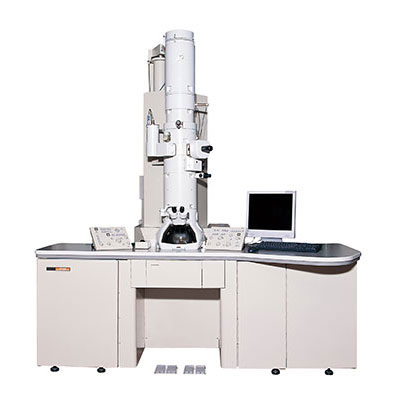
Main characteristics:
-
accelerating voltage up to 200 kV
-
increase to 1,000,000
-
dot resolution 0.30 nm
-
line resolution 0.14 nm
-
resolved sizes of grains, particles, elements of dislocation structure up to 1 nm and less

Main characteristics:
- accelerating voltage up to 30 kV
- increase to 1,000,000
- resolution 1.2 nm
- the accuracy of determining the spatial orientation by the EBSD method - 1°

Main characteristics:
- accelerating voltage up to 30 kV
- increase to 1,000,000
- resolution 3 nm
- detector resolution EDA 125 eV
- the accuracy of determining the weight content is up to 0.1 wt. %

Main characteristics:
- productivity 20 liters per day
- the capacity of its own Dewar vessel is 100 liters.
5. Emission spectrometer "SPAS-2" (Russia), 2012

Main characteristics:
- the accuracy of determining the weight content is up to 0.001 wt. %
- the minimum size of the analyzed sample section ø20 mm
6. X-ray diffractometer DRON - 4-07 (Russia), 1989

Main characteristics:
- Range of angles of movement of the detecting unit: from 5 ° to 142 °
- in step-by-step mode, step of angular scanning from 0.02 °
- in continuous mode with different scanning speeds
 Monitoring the quality of sample preparation for further research. It has a lower lens arrangement, allowing you to mount a large object regardless of its size.
Monitoring the quality of sample preparation for further research. It has a lower lens arrangement, allowing you to mount a large object regardless of its size.Main characteristics:
- sample weight up to 2 kg
- increase from 5 to 500
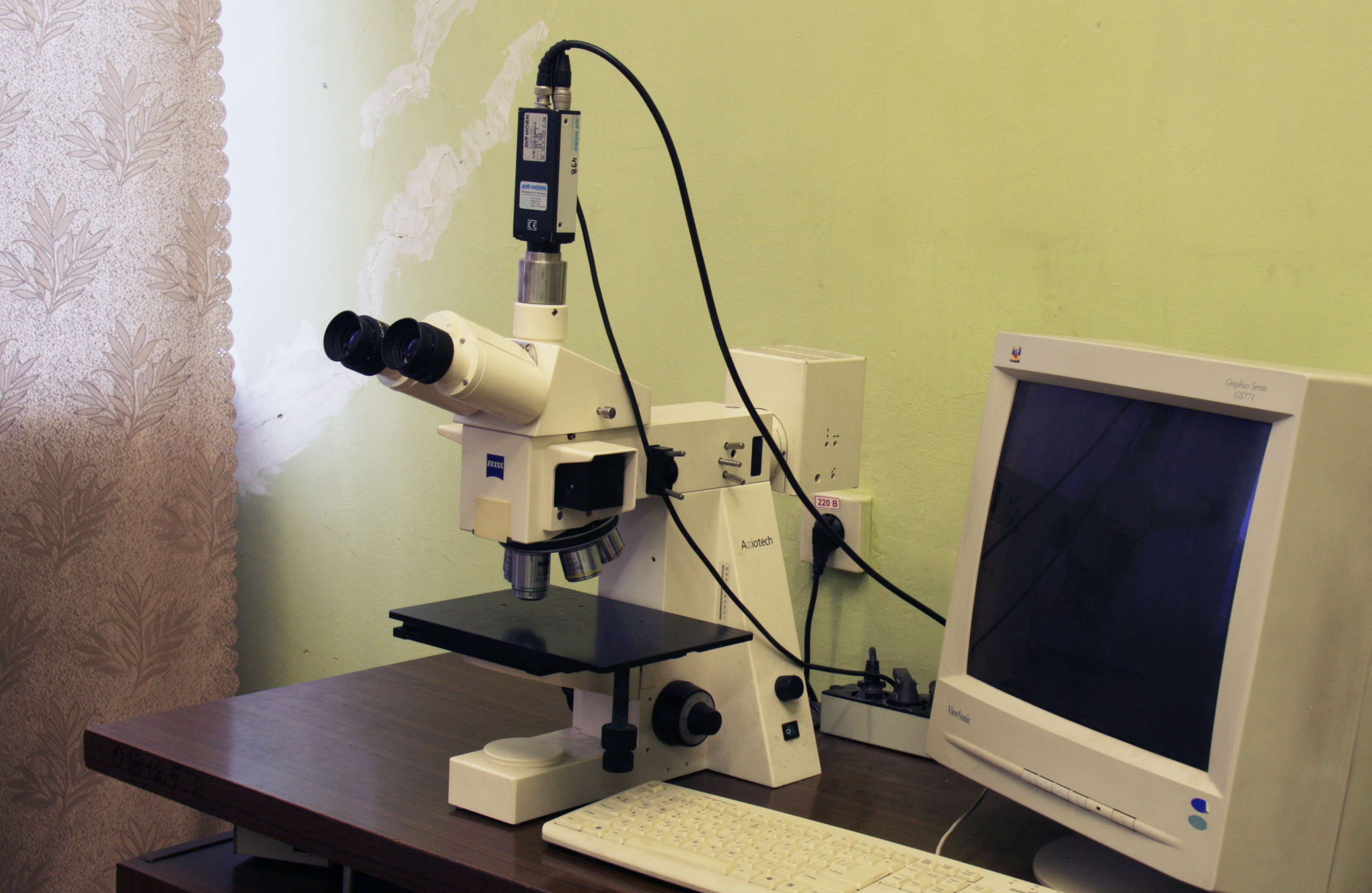 Monitoring the quality of sample preparation for further research. It has a movable table that allows you to increase the observation area and view the sample at the required interval.
Monitoring the quality of sample preparation for further research. It has a movable table that allows you to increase the observation area and view the sample at the required interval.Main characteristics:
- increase from 5 to 500
- working field of observation 50x50mm
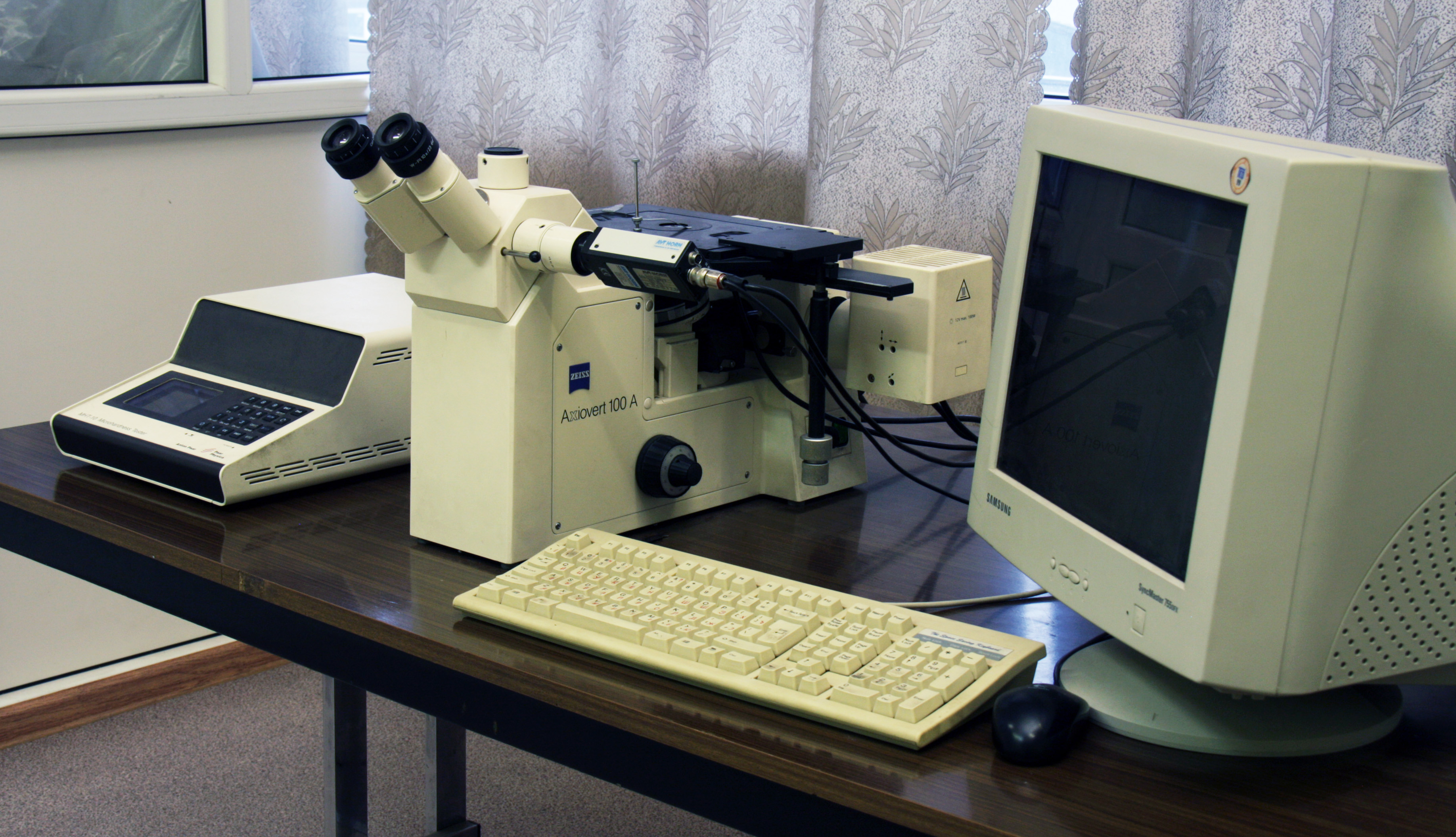 Optical microscope "Axiovert-100A" has an additional attachment and allows you to measure the value of microhardness of samples. Measurements are carried out using the Vickers method with a probe located under the microscope table. Thus, it is possible to install a large sample.
Optical microscope "Axiovert-100A" has an additional attachment and allows you to measure the value of microhardness of samples. Measurements are carried out using the Vickers method with a probe located under the microscope table. Thus, it is possible to install a large sample.Main characteristics:
- sample weight up to 2 kg
- magnification up to 500 times.
- hardness tester force from 5 to 1000 gr.
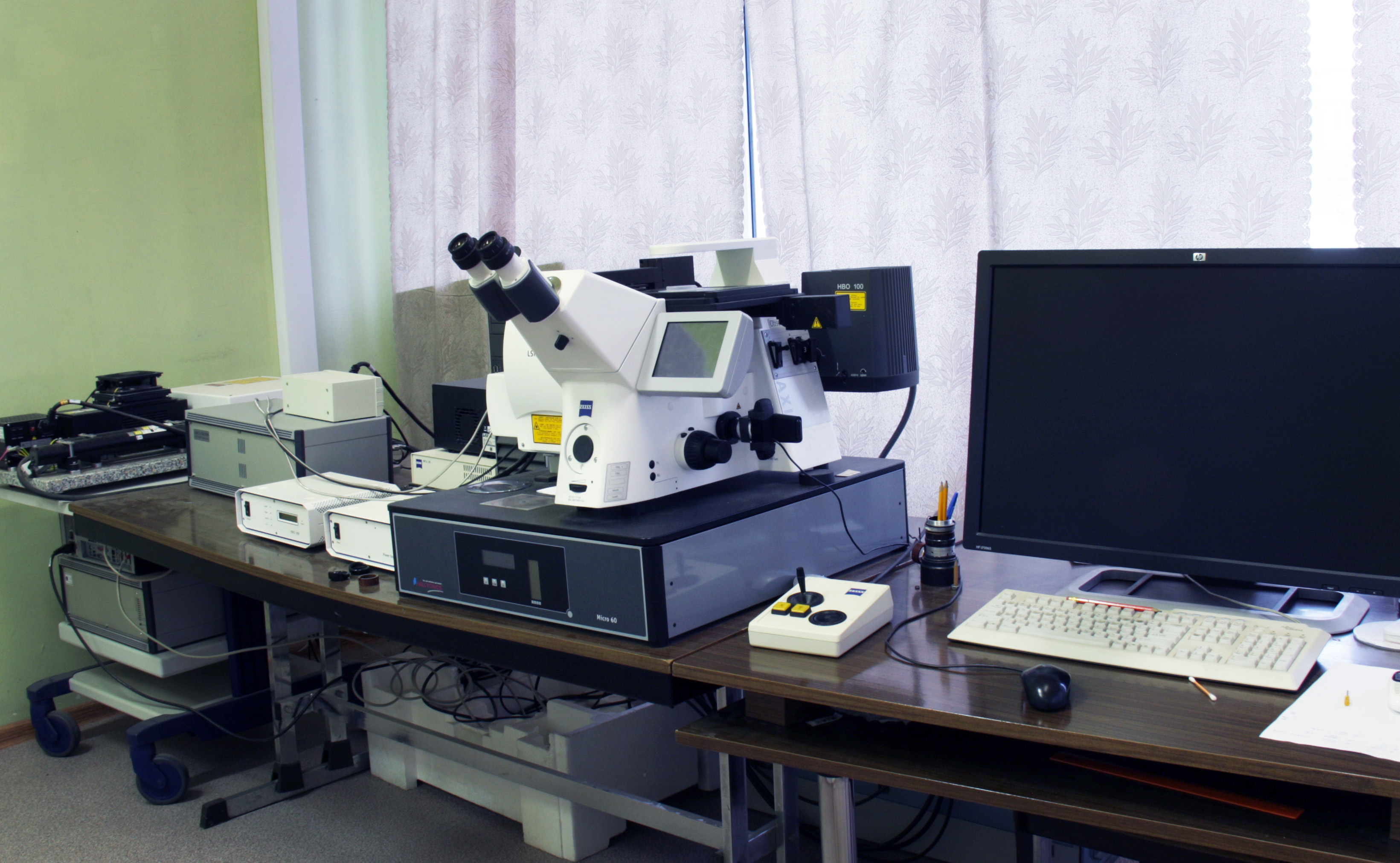 Confocal laser scanning microscope is designed to study various solid objects in biology, medicine, materials science in three-dimensional image using a laser system consisting of 3-4 lasers and an integrated system of light filters. There is a photo port that allows you to install photo and video cameras.
Confocal laser scanning microscope is designed to study various solid objects in biology, medicine, materials science in three-dimensional image using a laser system consisting of 3-4 lasers and an integrated system of light filters. There is a photo port that allows you to install photo and video cameras.Main characteristics:
- Resolved relief sizes ~ 0.1 μm (XY) and ~ 10 nm (Z)
- scanning field 100 × 100 (mm)
- in panoramic shooting mode 20 × 20 (mm)
11. Universal floor electromechanical testing machine Instron 5982 (England), 2009
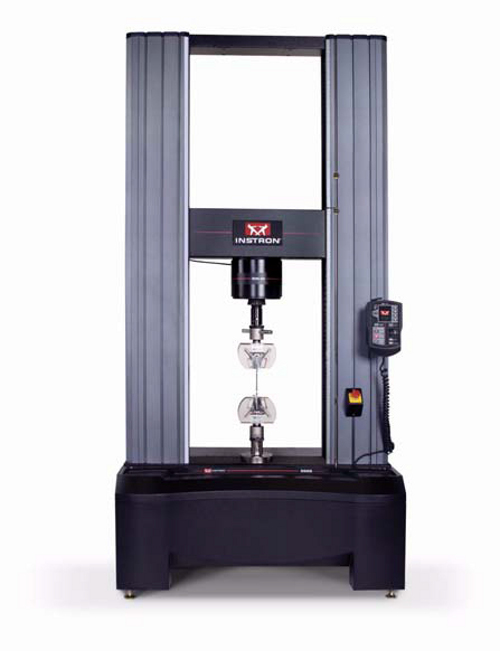 The equipment is used for uniaxial static tensile, compression and three-point bending tests. The machine allows testing in accordance with ASTM E8 / E8M, GOST 1497.
The equipment is used for uniaxial static tensile, compression and three-point bending tests. The machine allows testing in accordance with ASTM E8 / E8M, GOST 1497.Main characteristics:
- Maximum load applied to the sample 100 kN
- test speed from 0.0001 to 1000 mm / min
- test temperature up to 950 ° С
12. Universal floor electromechanical testing machine Schenck Trebel (Germany), 1989
 The equipment is designed for mechanical testing of various materials at different strain rates and static testing of specimens under tensile and compressive loads: tensile, compression, shear and bending tests in a wide range of working loads.
The equipment is designed for mechanical testing of various materials at different strain rates and static testing of specimens under tensile and compressive loads: tensile, compression, shear and bending tests in a wide range of working loads.Main characteristics:
- working load range up to 100 kN
- maximum load 100 kN,
- test speed from 0.02 to 100 mm / min
- test temperature from room to 1200 ° С
13. Servohydraulic testing machine Schenck Hydropuls PSA 10, (Germany), 1989
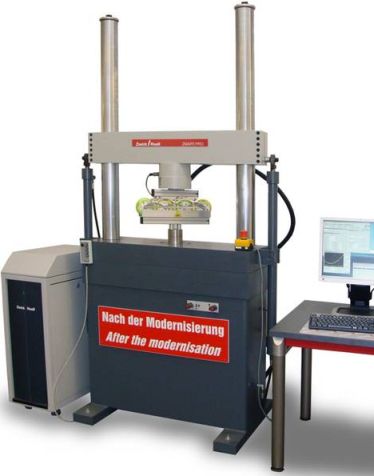 The machine is designed for cyclic fatigue tests: in tension-compression and bending; with symmetric and asymmetric cycles of stress or deformation; in high and low cycle elastic and elastoplastic areas.
The machine is designed for cyclic fatigue tests: in tension-compression and bending; with symmetric and asymmetric cycles of stress or deformation; in high and low cycle elastic and elastoplastic areas.Main characteristics:
- maximum load 100 kN
- operating frequency range 0-20 Hz
14. Koper pendulum Schenck Trebel RPSW (Germany), 1989
 The equipment is designed to create a normalized value of the measure of force during mechanical tests for two-support bending of high-strength specimens in impact mode in accordance with GOST 9454-78.
The equipment is designed to create a normalized value of the measure of force during mechanical tests for two-support bending of high-strength specimens in impact mode in accordance with GOST 9454-78.Main characteristics:
- potential impact energy reserve 300 / 150 J
- distance between supports 40 mm
15. Machine for creep and long-term strength testing model 2147P-30/1000 UHL 4.2 (Russia), 1988
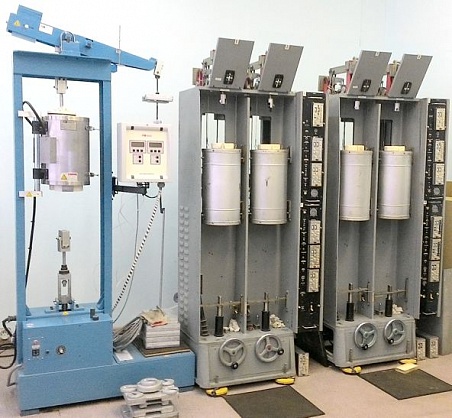 The installation is designed for long-term static tests for creep and long-term strength at various temperatures and loads.
The installation is designed for long-term static tests for creep and long-term strength at various temperatures and loads.Main characteristics:
- range of permissible loads from 0.05 to 30 kN
- test temperature up to 850 ° С
16. Rockwell hardness tester Instron RB2000 (England), 2010
 The equipment is designed to study the mechanical properties of materials by measuring the Rockwell hardness at room temperature.
The equipment is designed to study the mechanical properties of materials by measuring the Rockwell hardness at room temperature.Main characteristics:
- Preload 10 kg
- basic load 60, 100 and 150 N
17. Installation of complex loading SNT10BD (Russia), 1995
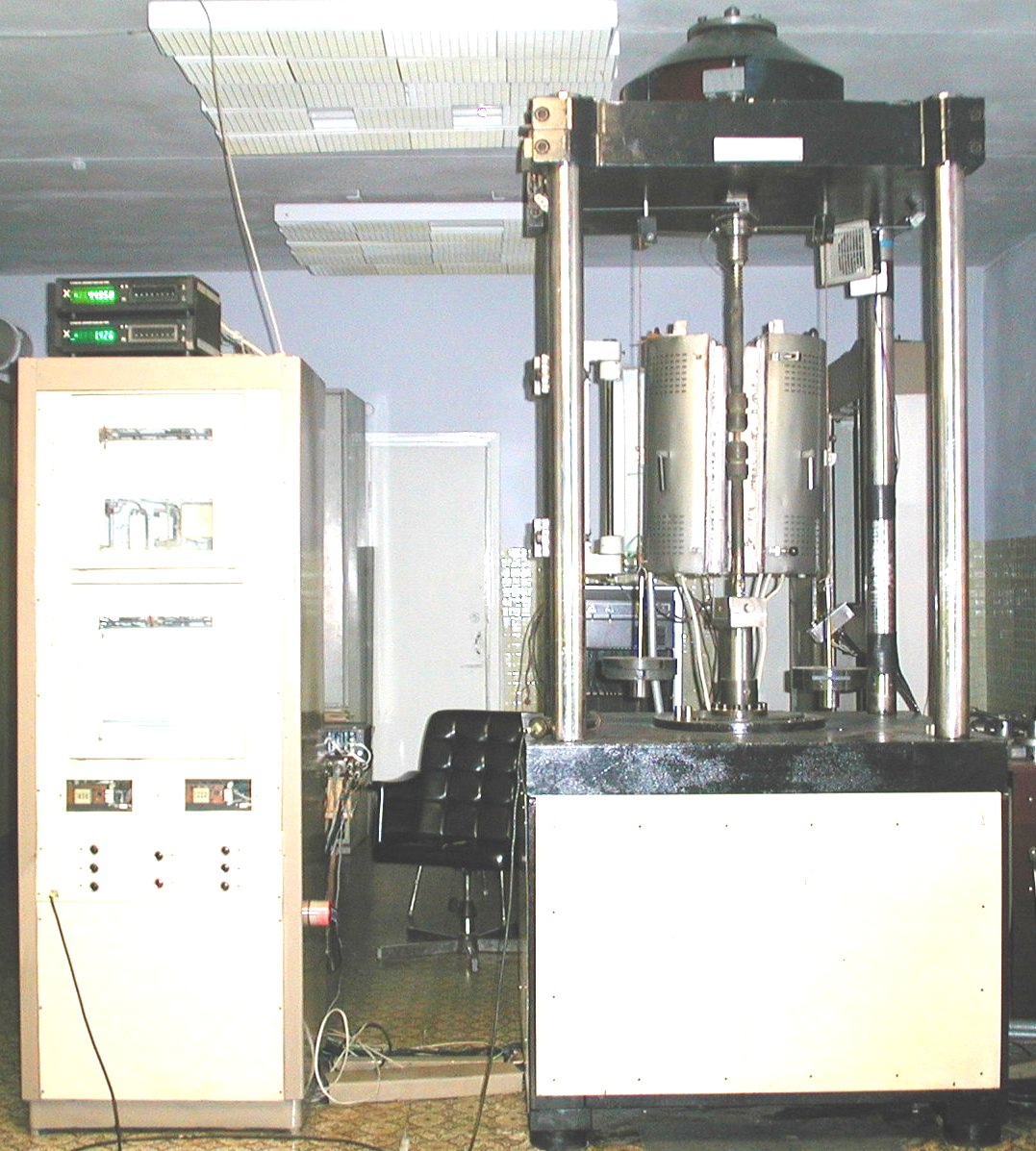 The equipment is designed for static tests in tension, compression, torsion, as well as in their combinations: tension-torsion, compression-torsion at various temperatures.
The equipment is designed for static tests in tension, compression, torsion, as well as in their combinations: tension-torsion, compression-torsion at various temperatures.Main characteristics:
- sample temperature from room to 950 ° С
- maximum axial load 100 kN
- maximum torque 200 N * m
18. Device for synchronous thermal analysis STA 449 F1 Jupiter NETZSCH (Germany), 2010
 The instrument combines thermogravimetry (TG) and differential scanning calorimetry (DSC) methods of the same sample on a single instrument. The instrument is equipped with a high-temperature, air-cooled platinum furnace and an integrated gas purge tube that allows measurements in a dynamic gas atmosphere of argon and helium. The device is equipped with the analytical software NETZSCH-Proteus.
The instrument combines thermogravimetry (TG) and differential scanning calorimetry (DSC) methods of the same sample on a single instrument. The instrument is equipped with a high-temperature, air-cooled platinum furnace and an integrated gas purge tube that allows measurements in a dynamic gas atmosphere of argon and helium. The device is equipped with the analytical software NETZSCH-Proteus.Main characteristics:
• temperature range of measurements from room to 1500 ° С
• sample heating rate from 0.1 to 50 K / min
• temperature measurement accuracy - 1.5 ° С
• calorimetric sensitivity 0.4 ... 15 μV / mW
• accuracy of measurement of enthalpy ± 3%
